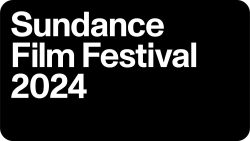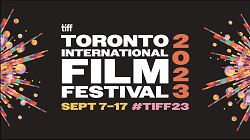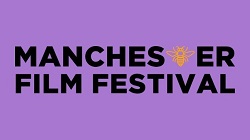Steven SpielBLOG: Close Encounters of the Third Kind
Steven Spielberg is a home-wrecker. Literally. In Sugarland Express, the foster parents of Baby Brandon have their home invaded and their windows smashed by the sniper team and in Jaws, we have Quint’s home The Orca wrecked and sunk by the great white shark but Close Encounters of the Third Kind takes domestic destruction to a whole other level.
The film stars Richard Dreyfuss as Roy Neary, a man-child who we first see playing with a train set which has taken over the family main living area. His children grab his attention only when he sees the opportunity to use them as part of his game, or an excuse to go and see Pinocchio. [By the way, I’ve seen all the cuts of the film. I watched the original theatrical release for this blog post – which doesn’t have the Pinocchio scene – but shall be commenting on the film as an amalgam of all versions.] His long-suffering wife Ronnie (played by Teri Garr) will ultimately be pushed too far by Neary’s breakdown, culminating in his wrecking the house and his neighbour’s garden in order to build a replica of Devil’s Tower in the living room. But here I’m running too far ahead.
Spielberg’s third feature is his first grab at auteur status. Both writing and directing, he chooses a subject which in the 1970s was all the rage: UFOs. The opening fifteen minutes establishes an ambitiously international canvas, starting in Mexico and move to an air traffic control center in the US, before later in the film taking us to India and back to Indiana. There’s something almost James Bond in the globe-trotting. The casting of nouvelle vague director Francois Truffaut also lays claim to a prestige beyond the popcorn blockbuster. His Lacombe leads a team of scientists who have accumulated evidence of extraterrestrial visitors and established a contact which they hope will lead to a close encounter. Meanwhile, Neary, an Indiana-based electrician, is having his life destroyed as he struggles in the grip of an ET-induced obsession. Likewise, single parent Gillian (Melinda Dillon) is at first dazzled by the UFOs but then has her child abducted. Gillian – it has to be said – is a fairly rotten mom. Her apparent butterfingers when keeping a grip on her child’s arms or ankles, repeatedly, gives the film its most infuriating trope. As bad as she is, at least she wants to be reunited with her child whereas Roy runs off, abandoning his family with nary a glance behind.
Although Spielberg explicitly wants us to think of the aliens as benign, there is a problem here. The obsession placed in Neary is not of his own volition. It is implanted by the aliens. We see the flashes of the transmission as he stares up at the bright lights in his first encounter. He will destroy his family life, get fired from his job and risk death in order to rendezvous 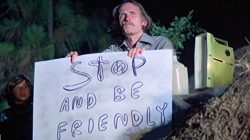 with the aliens. And it manifests as a compulsion. Twice he decides he has gone too far and he wants to return to normality, but then is triggered into another level of mania. We assume the aliens are good but there’s a naivete to this optimism: a new age hopefulness which accepts a level of passivity that surrenders our will to wonder and hope. It is not difficult to draw a line from the conclusion of the movie to the mass suicide in 1997 of the Heaven’s Gate cult which saw 39 cult members commit mass suicide so as to join a UFO that they believed was trailing the Hale-Bopp comet.
with the aliens. And it manifests as a compulsion. Twice he decides he has gone too far and he wants to return to normality, but then is triggered into another level of mania. We assume the aliens are good but there’s a naivete to this optimism: a new age hopefulness which accepts a level of passivity that surrenders our will to wonder and hope. It is not difficult to draw a line from the conclusion of the movie to the mass suicide in 1997 of the Heaven’s Gate cult which saw 39 cult members commit mass suicide so as to join a UFO that they believed was trailing the Hale-Bopp comet.
Richard Dreyfuss plays Neary as a child and puts in as much comedy as the character will hold, but the comedy often plays uncomfortably over scenes of genuine discomfort. See how the comedy of Neary’s final breakdown clangs against the perspective of his eldest son who is obviously traumatized by his father’s bizarre behaviour. In one of the cuts, the son shouts at his father that he’s a crybaby – an autobiographical scene which saw a young Spielberg accusing his weeping father at the point of the breakdown of his parent’s marriage.
As will happen with ET: The Extra-Terrestrial, outer space is a comforting elsewhere that compensates for the manifest malfunctions of family life on Earth. The UFOs represent an escape from domesticity, an escape from earthbound woes and worries. He’s summarily dismissed from his job, presumably as part of some conspiracy, but it could also be that he went off chasing UFOs instead of doing the important task he was given in the middle of an emergency. And as for family life, he’s already playing with his train set before the UFOs make contact, a distracted presence at best. No one can communicate properly. Neary and his wife struggle. Truffaut requires Bob Balaban to get through to his co-workers. The aliens use John Williams’ music. But problems are there to be overcome. Neary finds a partner in Gillian – though the kiss is one of the least romantic in the history of cinema. It’s as if Peter Pan snogged Tinkerbell. And the music does work with the Mothership and nerds jamming out some electro-funk to make Miles Davis sit up and listen.
Close Encounters represented the beginning of the Spielbergian: an aesthetic of lens flare, diffuse misty nighttime photography, the cluttered domestic space – all those toys and gadgets – and the matching of the intimate with the grandiose and at times awe-inspiring.
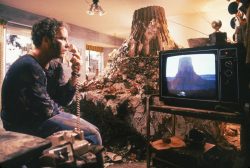 The story goes that George Lucas was so impressed with what he saw in production – and so insecure with his own work – that he offered to swap points with Spielberg on Star Wars. Spielberg took him up on it and won the bet. But Close Encounters was not only a massive hit, like Jaws it was a cultural phenomena. It brought a degree of respectability to UFOlogy that only disappeared with the invention of the camera-phone. Again John Williams wrote a score that included an instantly recognisable theme which would become the musical shorthand for that thing. Sharks – the theme from Jaws. Aliens – Close Encounters.
The story goes that George Lucas was so impressed with what he saw in production – and so insecure with his own work – that he offered to swap points with Spielberg on Star Wars. Spielberg took him up on it and won the bet. But Close Encounters was not only a massive hit, like Jaws it was a cultural phenomena. It brought a degree of respectability to UFOlogy that only disappeared with the invention of the camera-phone. Again John Williams wrote a score that included an instantly recognisable theme which would become the musical shorthand for that thing. Sharks – the theme from Jaws. Aliens – Close Encounters.
While still working on principal photography Spielberg read a script by Robert Zemeckis and Bob Gale which John Milius had been developing. It was something he hadn’t attempted before: a comedy. And it would be his next film and his first turkey: 1941.
Next up: 1941
You can check out my blog and follow me on Twitter.



